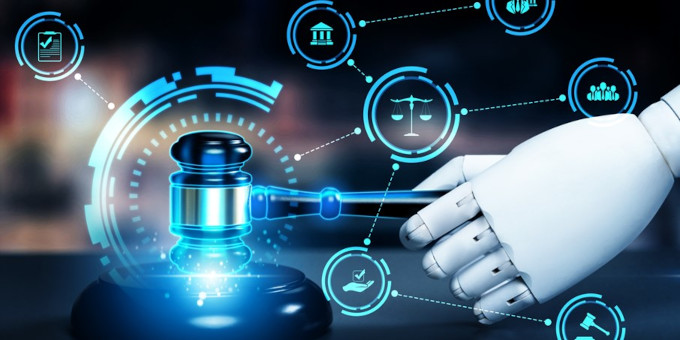

Angle

Trending eDiscovery Topics in the Courts
- 3 Mins
It is crucial for litigators and eDiscovery consultants to monitor case law developments, especially in relation to emerging technologies and changes to legal practice. With the first half of 2023 in the books, it is an ideal time to review hot issues. This knowledge can help litigators anticipate what to expect in court, guide technology and provider partnership needs, and efficiently navigate litigation.
Below are two discovery trends that have continued to grow.
#1: There is an increasing demand for carefully crafted ESI protocols.
More litigators are creating protocols to guide eDiscovery in their cases. Unsurprisingly, this topic has gained momentum in the courts over recent years. Since parties agree to what is in a protocol, most judges follow those directives and allow it to govern the outcome of discovery disputes.
Case law in this area has covered a variety of issues, but the underlying theme is that litigators need to think through what they are agreeing to before creating an ESI protocol. By considering potential issues and bringing disputes to the court at an earlier stage, parties have more clarity going into the process and avoid extra costs and delay. Also, limiting what is in the protocol to account for unknowns and leaving room to amend is emerging as an industry best practice.
Here are two cases from 2023 that illustrate and expand upon this theme:
- In SinglePoint Direct Solar LLC v. Solar Integrated Roofing Corp., No. CV-21-01076-PHX-JAT (D. Ariz. March 21, 2023), plaintiff objected to search terms defendant submitted several times and claimed that a good majority of the production sought from defendant was unnecessary. The parties had agreed to ESI protocols prior without asking the court to review. The protocol did not set a time limit to object.
While the judge sided with defendant on the proportionality argument, he made it a point to label the protocol as poorly crafted and did not agree with defendant’s claim that the objections were untimely. He proclaimed that had they submitted the protocols for approval the court would have deemed them unmanageable, which would have allowed the parties to add in objection timelines and make other necessary changes before moving forward with the case. This illustrates that judges use protocols to guide rulings, want them to be more specific, and see benefit in having the court review them before finalization.
- McCormick & Co. v. Ryder Integrated Logistics, Inc., No. JKB-22-0115 (D. Md. March 08, 2023) is another instance of courts closely following ESI protocol language. A custodian in the case had ceased employment at plaintiff company and all data was deleted. Plaintiff had to retrieve information from six other sources to capture relevant communications and searched the name of the custodian in the ESI already gathered. This greatly increased the amount of potentially relevant documents and plaintiff argued that being forced to review these search results prior to production was not proportional.
The ESI protocol had a section labeled “no presumption of responsiveness” that said to fulfill discovery production obligations, a party needed to review documents that are potentially relevant pursuant to the methods outlined in the protocol. It went on to state that when a document is captured by a search pursuant to the protocol, that does not necessarily mean it is responsive and some data will be appropriate to exclude from production. Plaintiff argued that the protocol did not require manual document review pre-production after identifying potentially relevant documents via search terms. The court disagreed, concluding that Plaintiff was not looking at the protocol as a whole as the plain language mandated manual review of documents captured via search terms before production. The judge also found the cost and time burden to be proportional. This ruling is key because had the protocol been more limited, the court may have deemed the tech-enabled review sufficient on its own.
While ESI protocols are not new, these cases show how important they are becoming in litigation. Judges are allowing protocols to guide most disputes and weighing in more often about how or when they should be drafted in order to avoid extra costs and delays. Some analysts predict that data security and privacy obligations may be required in future protocols, so litigators should monitor new case law to see if this occurs.
#2) Judges are still relying on inherent authority to justify sanctions.
Federal Rule of Civil Procedure 37(e) provides a basis for judges to award sanctions when a party fails to preserve or destroys evidence. It has almost been a decade since Rule 37(e) amendments became effective, which intended to streamline sanctions and provides factors that promote consistency. Although these amendments aimed to foreclose reliance on inherent authority, judges are still using it to justify sanctions.
The question persists – should judges be allowed to rely on inherent authority? Legal analysts along with case law suggest the answer to this question is yes, and there have already been decisions involving inherent authority this year. While Rule 37(e) applies in many situations, judges are still relying on inherent authority to issue sanctions where anomalies are present in an effort to reach justice. Judges have continued to use inherent authority both as an alternate to the powers bestowed in the federal rules or in conjunction with the Rule 37(e) factors. This is a very subjective area of the law, as sanctions are dependent on the facts of the case and require an analysis into intent behind the behavior.
For example, in the patent infringement case of Site 2020 Inc. v. Superior Traffic Servs., LLC, No. CV 21-63-M-DLC-KLD (D. Mont. Mar. 27, 2023), the court issued severe sanctions for plaintiff’s discovery misconduct. The parties were competitors in the traffic signal industry. Plaintiff had someone attend a business demonstration between defendant and a third-party by posing as an employee of the third-party. The individual secretly recorded the meeting where attendees discussed sensitive information.
The judge proclaimed that in addition to being able to issue sanctions for bad faith actions, the court also has inherent authority to issue case-terminating sanctions when the conduct is deliberate, deceptive, and interferes with judicial integrity. As such, the judge granted Defendant’s motion for dismissal sanctions finding that this behavior during active litigation sidestepped the federal rules applying to discovery and deprived Defendant of representation. However, the judge denied the request for default judgement on the counterclaims noting that would be too severe given the facts.
This decision mirrors the apparent consensus on the state of inherent authority – that it is still available but limited. Judges are generally turning to inherent authority in a discretionary manner when the conduct is very egregious. While spying on a party to obtain information before discovery disclosure is a very severe action, other instances where judges have turned to their inherent powers include when a party withholds, loses, or destroys evidence.
Conclusion
The above represents a snapshot of two key discovery issues that persist before the courts. ESI protocols are increasingly pivotal in governing discovery disputes and judges are still turning to inherent authority to ensure all sanctionable discovery conduct is addressed. As remote work persists, technology usage evolves, and regulatory obligations tighten – there will be more cases in these areas and entirely new trends that unfold. Analyzing trends provides insight about investing in optimal technology and provider partnerships. Working with knowledgeable providers that have experience crafting ESI protocols, access to emerging technologies, and strategies to remain discovery compliant fosters successful streamlined litigation outcomes.
The contents of this article are intended to convey general information only and not to provide legal advice or opinions.
